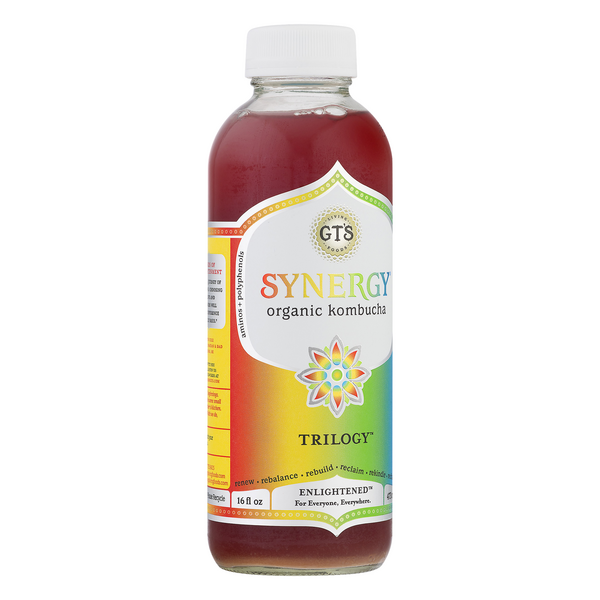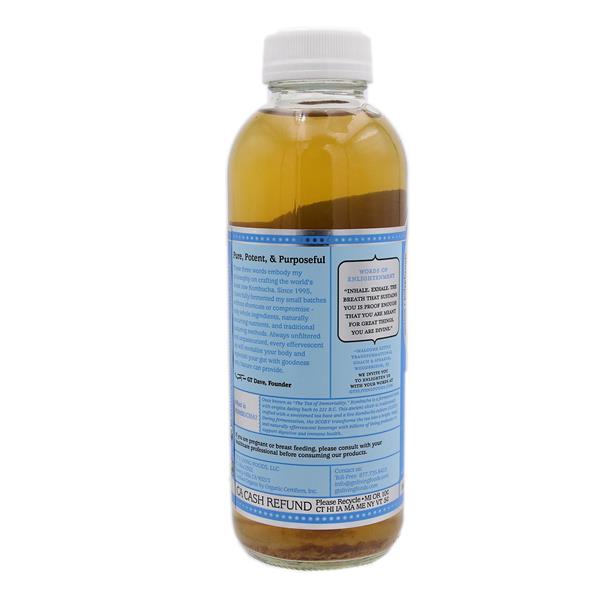
If it floats sideways or sinks, leave it! It’s just doing it’s SCOBY thang. But then one day a thin, translucent layer will form, eventually thickening into a full on SCOBY. Don’t mess with it! You won’t see anything but a few bubbles in the first few days.You can use honey in the second fermentation, once there are a higher number of good bacteria to fight off the bad, but for now, stick to sugar.

No honey. Honey can contain botulism bacteria that, when grown exponentially as bacteria and yeast tend to do in kombucha, can be dangerous.By all means, once your SCOBY is big and strong you can use green tea, but for now stick with black. Only black tea. Similarly, the SCOBY doesn’t grow as well with green or fruity teas.No decaf. The SCOBY doesn’t like decaf tea and will not grow as well if fed it (SCOBY = my spirit animal).Don’t use this tea as the starter to your first fermentation!

The tea you used to make the SCOBY, however, is very vinegary and should be tossed.

The SCOBY should live and grow for years if treated with love.
Keep SCOBY in its original tea until you’re ready to brew your first batch. Set somewhere dark, still, and room temperature (70-75 degrees F, 21-24 C), like a cupboard, for 1 to 4 weeks, until a ¼ inch (½ cm) SCOBY has formed. Cover with a few layers of the tightly woven cloth (keeps out bugs and debris) and secure with a rubber band. Pour the sweetened tea into your jar(s), then pour store-bought kombucha in (if you’re using two jars, pour ½ of the storebought kombucha into each), making sure to include any little gunkies that may be at the bottom. Only when water is at room temperature is it ready to work with (test by drawing out some water with a paper straw, using your finger to keep the ‘buch in the straw). Add the tea and allow to steep while water cools to room temperature (a few hours). Remove from heat and dissolve sugar into it. Tightly woven cloth (coffee filters, paper towels, napkins, cheese cloth). Alternatively, use a glass jug with a built in spigot to make pouring the kombucha out easier! A large glass or ceramic container (two jars holding at least ½ gallon (1.9 L) each, or one jug holding at least 1 gallon (3.7 L)). 1 cup (235 mL) unpasteurized, unflavored store bought kombucha. Yes, it’s scary and alien looking and Buzzfeed did a whole article about how ugly this mama is…but it’s the very essence of kombucha! It brings the love and flavor and magic! The SCOBY (symbiotic culture of bacteria and yeast) is the mother of the kombucha, providing bacteria and yeast to ferment the sweet tea, protecting the tea from outside contaminants, and providing a loose seal to keep a bit of the carbonation in. If you see any mold growing on your SCOBY or in the tea (which I understand can be difficult to discern from the hideous SCOBY, but will generally be green, white, or black), then toss your whole batch. 
Fermentation goes a bit quicker in warmer temperatures, and a bit slower in colder. A recurring theme in kombucha brewing is that EVERYTHING must be CLEAN! We’re creating the perfect environment for good bacterial growth, but if a bad bacteria slips in, it could ruin your batch (and make you pretty sick). Metal can react with the acidic kombucha and hurt your SCOBY, while plastic can house nasty bacteria that you don’t want sneaking in. Before we start, here are some general notes that are consistent throughout the whole homemade kombucha process.








 0 kommentar(er)
0 kommentar(er)
